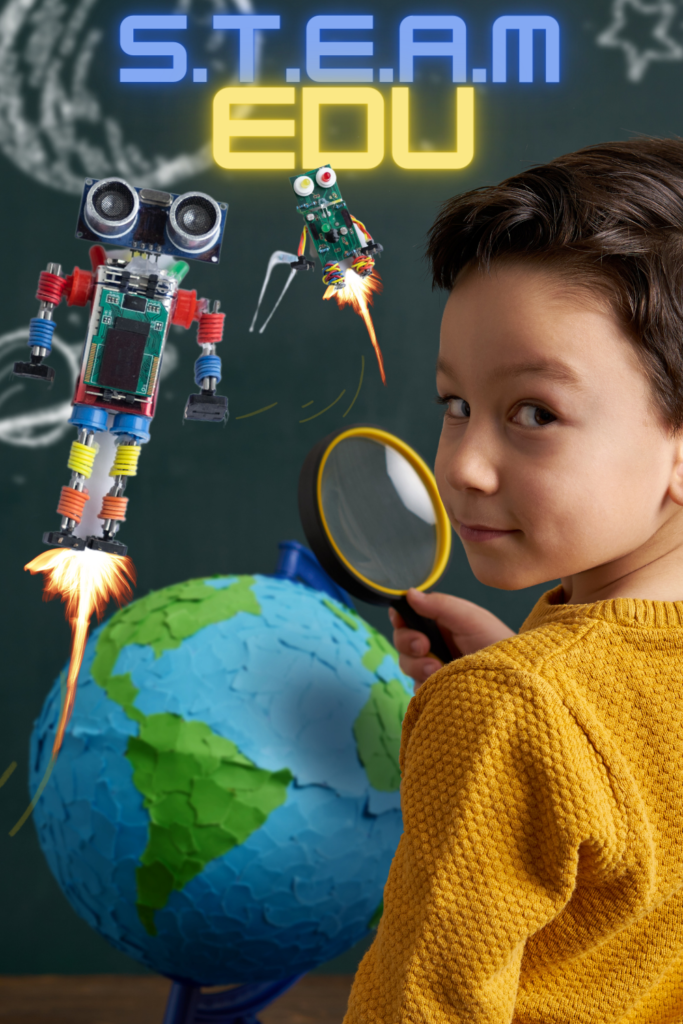
Use hands-on STEAM projects for kids to ensure your kids’ success in STEAM fields. Furthermore, these projects serve as the foundational reinforcement of the knowledge gained in science, technology, engineering, arts, and mathematics in school. Discover how these hands-on STEAM projects can benefit your kids’ future careers and life skills in this guide.
Why Hands-On STEAM Projects Are Important for Kids
With STEAM projects, kids not only learn new concepts but also have fun while doing so. Plus, they develop teamwork and collaboration skills, making it a win-win situation.
Engaging in hands-on STEAM projects allows kids to develop crucial skills such as critical thinking, problem-solving, and creative innovation. Plus, it’s a fun way to learn! Moreover, these projects encourage teamwork and collaboration, which are valuable skills for all aspects of life.
According to research, hands-on learning is a highly effective way to engage young learners and help them retain information. Additionally, this approach can foster critical thinking and problem-solving skills. With STEAM projects, kids are not only learning new concepts, but they’re also having fun while doing so. When kids are having fun, they’re more likely to be engaged and invested in what they’re learning.
Exciting Hands-On STEAM Projects for Grades 1-3
Now that we understand why STEAM projects are so important, let’s dive into some fun and engaging projects that are perfect for kids in grades 1-3.
Build a Simple Machine
In order to introduce young learners to engineering, simple machines are an excellent starting point. Kids can make their own simple machines, like levers, pulleys, and wheels, using cardboard, popsicle sticks, and glue. These projects are not only enjoyable, but they also help children develop an understanding of how machines work and how they can be used to make tasks easier.
Create a Solar Oven
Teaching kids about renewable energy sources, such as solar energy, is a fantastic way to introduce them to the world of science. With just a few simple materials like a pizza box, aluminum foil, and plastic wrap, kids can create their own solar oven. This project not only teaches children about the principles of solar energy but also allows them to experiment with cooking their own food using the power of the sun.
Design a Rube Goldberg Machine
Rube Goldberg machines are complex contraptions that perform a simple task through a series of chain reactions. These machines are a fantastic way to teach kids about cause and effect, as well as problem-solving and creativity. Using materials such as marbles, dominoes, and toy cars, kids can create their own Rube Goldberg machines and experiment with different designs and configurations.
Build a Bridge
Building a bridge is an exciting project for kids who are interested in not only engineering but also architecture. With just toothpicks, popsicle sticks, and also glue, kids can construct their own bridges and test their strength by adding weight. Kids develop spatial awareness and problem-solving skills while learning engineering and design principles with this project.
Create a Stop-Motion Animation
Stop-motion animation is basically a fun and creative way for kids to explore the world of art and technology. Using materials such as clay, paper, or toys, kids can create their own stop-motion animation videos. This project not only allows kids to express their creativity, but also helps them develop important skills such as planning, sequencing, and storytelling.
Online Resources for Hands-On Steam Projects
Online resources abound for hands-on STEAM projects with kids!
- Khan Academy: Khan Academy offers free online courses and tutorials on a wide range of subjects, including STEAM topics
- DIY.org: DIY.org offers a wide range of online STEAM courses, challenges, and projects for kids.
- NASA Kids’ Club: NASA Kids’ Club offers a fun and interactive way for kids to learn about space and science.
- STEAM Powered Family: STEAM Powered Family is a website that provides STEAM activities and resources for parents and educators.
FAQs
Q: What age range is appropriate for these STEAM projects?
A: These projects for grades 1-3 can be adapted for younger or older children too.
Q: Do I need any special materials or equipment for these projects?
A: Most of the projects can be completed using materials that you likely already have at home, such as cardboard, popsicle sticks, and glue. For some projects, you may need to purchase additional materials, but they are generally inexpensive and easy to find.
Q: How much adult supervision is required for these projects?
A: The amount of adult supervision required will vary depending on the project and the age of the child. Sharp objects or hot glue guns may require more supervision for some projects.
Product Recommendations
If you’re interested in trying out some of these STEAM projects with your kids, here are a few product recommendations to help you get started:
Elmer’s Glue-All Multi-Purpose Glue: This versatile glue is perfect for a wide range of STEAM projects, from building bridges to creating stop-motion animations.
EUDAX Simple DC Motor DIY Electric Motor Kit: This motor kit is an excellent way to introduce kids to the principles of engineering and design.
Crayola Model Magic Modeling Compound: This lightweight modeling compound is perfect for creating detailed sculptures and other art projects.
K’NEX Education – Simple Machines Set: This set includes all the materials kids need to build their own simple machines, including levers, pulleys, and gears.
The SolSource Solar Cooker is perfect for cooking food with solar energy in the solar oven project.
Conclusion
STEAM projects engage kids and teach skills that benefit their future. Incorporating these projects into your child’s learning will help them develop skills like critical thinking, problem-solving, creativity, and collaboration. Above all, I hope this guide inspires you to explore the exciting world of STEAM with your kids!

